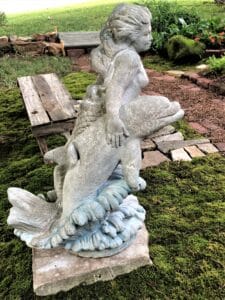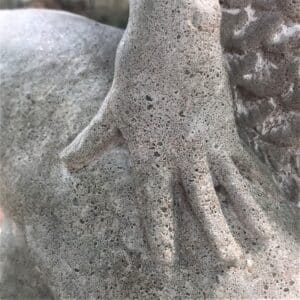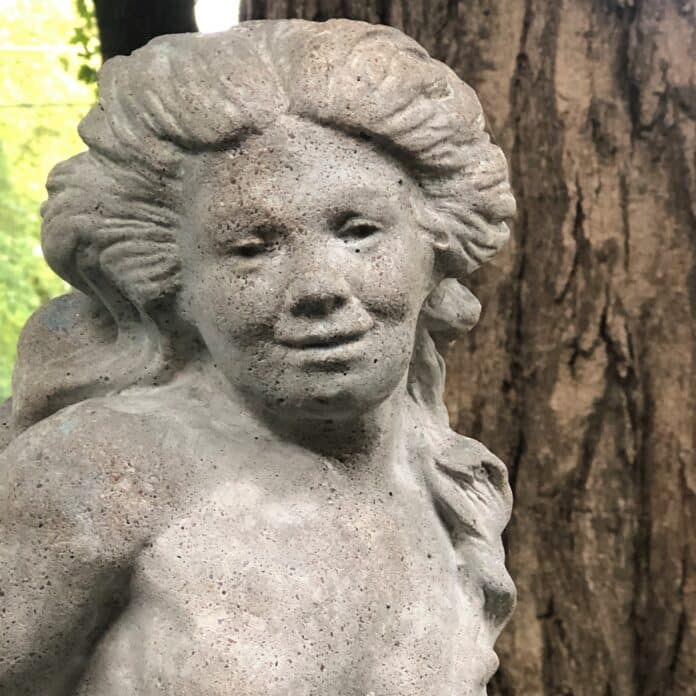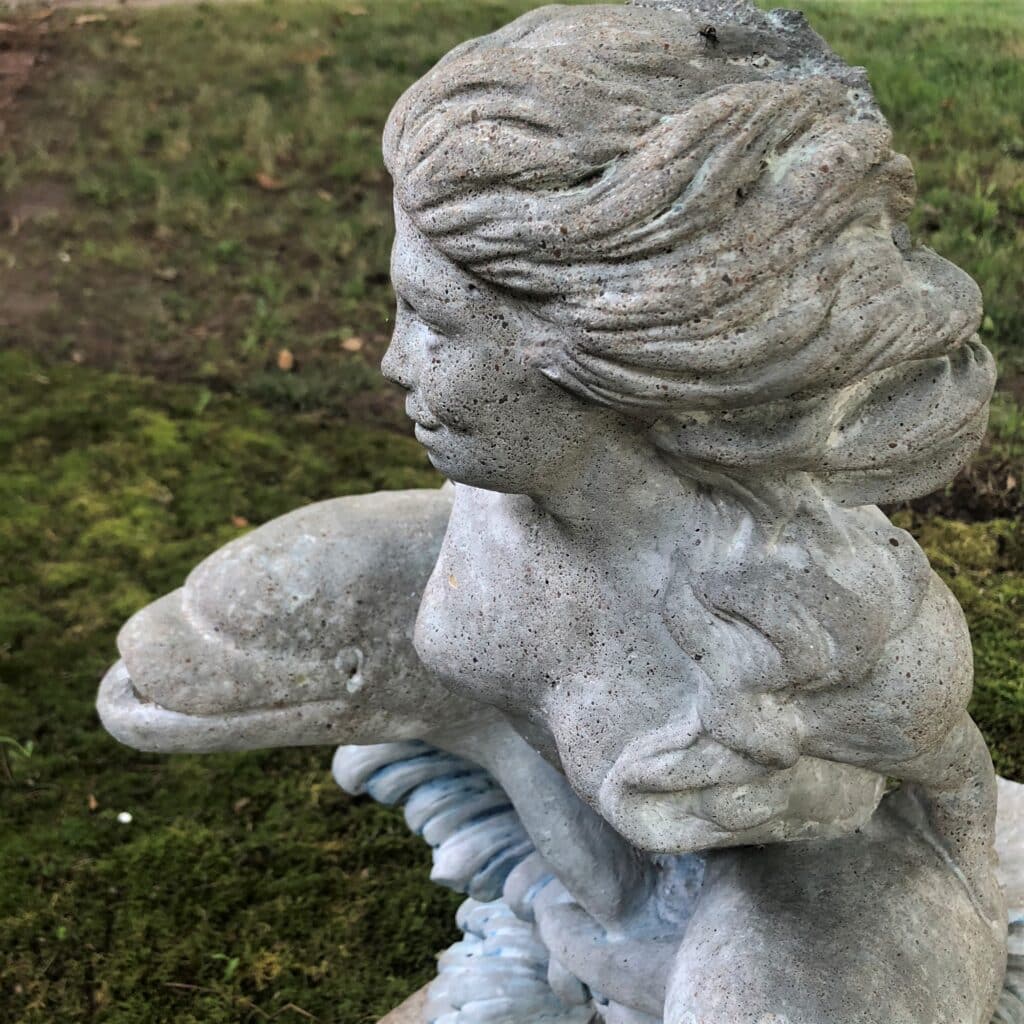She appeared first as an over-painted presence standing on a scarlet red handcart. Her photograph, attached to a text message, was sent by husband’s sister Ginny. “Do you want her?” Ginny asked.
I showed her image to David. We both felt dubious about making the trip to Joplin to look at her and her two dolphin consorts—about possibly bringing her home. “What on earth would we do with her? Where would we put her?” Overriding our resistance, we decided that since after all she was a mermaid we should at least pay the courtesy of a visit.
David and I both have a thing for mermaids.
I have painted mermaid images for as long as I can remember. I once painted a 1970 Chevy with a mermaid swimming down one side and her companion merman swimming over the opposite doors. The first gift I gave to David was my painting of a Haitian mermaid.
David has collected mermaids for decades, especially gathering them during his Navy years as a sailor circling the globe. We now have these treasures scattered all over our house—resting on table tops and nestled in planters, swimming on walls and perched on the tops of picture frames.
 Searching the web, I have learned that mermaids have been swimming through worldwide cultures for a very long time. The first known mermaid stories “appeared in Assyria around 1000 BC. The goddess Atargatis, mother of Assyrian queen Semiramis, loved a mortal (a shepherd) and unintentionally killed him. Ashamed, she jumped into a lake and took the form of a fish, but the waters would not conceal her divine beauty.”
Searching the web, I have learned that mermaids have been swimming through worldwide cultures for a very long time. The first known mermaid stories “appeared in Assyria around 1000 BC. The goddess Atargatis, mother of Assyrian queen Semiramis, loved a mortal (a shepherd) and unintentionally killed him. Ashamed, she jumped into a lake and took the form of a fish, but the waters would not conceal her divine beauty.”
“On 9 January 1493, Christopher Columbus observed something he had before seen on the coasts of Africa…mermaids. In his journal he described the encounter with three mermaids that elevated themselves above the surface of the sea.”
Mermaid sightings by sailors and Christopher Columbus, too, when they weren’t made up, were “most likely manatees, dugongs or Steller’s sea cows (which became extinct by the 1760s due to over-hunting). Manatees—the creatures once believed to be mermaids—are slow-moving aquatic mammals with human-like eyes, bulbous faces and paddle-like tails. Indeed, manatees and dugongs are both known to rise out of the sea like the alluring sirens of Greek myth, occasionally performing ‘tail stands’ in shallow water.”
“Thousands of miles from the seas Columbus sailed, the dugong—found in the Pacific Ocean—had been living in legend for centuries. In 1959, 3,000-year-old cave drawings depicting dugongs—the word translates to “lady of the sea” in the Malay language—were discovered inside Malaysia’s Tambun Cave.”
 With such an alluring heritage and our love for creatures of her mystique, how could we resist bringing home this over-painted lady of the sea? We were not sure where she would land, but we agreed that, before we placed her in our gardens, we needed to rid her of her over-done bold colors.
With such an alluring heritage and our love for creatures of her mystique, how could we resist bringing home this over-painted lady of the sea? We were not sure where she would land, but we agreed that, before we placed her in our gardens, we needed to rid her of her over-done bold colors.
On the shelves of our local hardware store we found a user-friendly, non-toxic but still effective paint removal gel. For two weeks, yearning to reveal the concrete beauty of our mermaid’s sweet face, delicate hands and curvaceous form, I kept stripping her down, layer by layer. Even when the swarming mosquitoes seemed ferociously intent on torturing me, I held my course and continued removing our mermaid’s suffocating impasto pigments.
Finally, our lovely lady stood bare and beautiful swimming with her two companions atop splashing concrete waves still slightly tinted with hints of the thick blues that had once weighed them down. Now from the street you can see them atop the incline rising up to our house. Above a sea of mossy green they charmingly beckon us to admire their restored dignity and their rescued mystical essence.
For many more magical sightings be sure to visit the JASON SHELFER | SCULPTURAL SPECTACULAR—the free drive-through exhibition now on view at artCentral, 1110 East Thirteenth Street in Carthage!
















